The Power of Attention: A Conversation with Marc Guldimann

The battle for our attention is being fought in earnest across almost every platform. Brands are competing with gaming, sports, movies, TV shows and countless other media to gain traction with people. Increasingly, our economy is built on attention, and only those who understand this new commodity will be positioned to take advantage. In a conversation with Adelaide CEO Marc Guldimann, we focus on how to define, measure and approach this "attention economy" and what the recently launched Attention Council is doing to create relevant metrics.
Philip McKenzie: Tell us a bit about your background and your work with Adelaide.
Marc Guldimann: I got into advertising accidentally about 13 years ago. I started a company called Sponge Cell that raised money from IPG. I pivoted that into a focus on display advertising. I then started a company called Ichen that was focused on privacy and individuals' data. I saw how data was used to target people to drive so-called efficient advertising.
Fast-forwarding and going through several other iterations of companies and projects, I have evolved into Adelaide. Simply put, Adelaide is a performance tool for brand builders. Adelaide helps advertisers understand the value of media, find bargains and avoid overpriced placements.
McKenzie: It sounds like, in the broadest sense, you are creating an opportunity for arbitrage in the advertising market.
Guldimann: In this marketplace, buyers often cannot discern low quality from high quality. So, there is a mismatch in the quality of the advertising buy relative to the reach, efficacy and content. It is our model to identify those gaps and execute the arbitrage before we are left with a "lemon" market. The high-quality options price themselves out, and everyone is merely left with "lemons."
McKenzie: How does the attention economy, specifically, play into this idea?
Guldimann: When you think about an attention economy and how it relates to advertising and communication, there are two elements: media and creative. The media's job is to get attention to creative in an environment where it will not be easily ignored, or people are less likely to be distracted from that initial point of contact. Creative's job to maintain that attention and then to transition it into impact. What do you want people to do?
Then you have high quality versus low quality. Are you making ads that interrupt the user experience? Are screens becoming cluttered with ads that only serve ineffective metrics?
These are some of the factors when I think about the attention economy and what it means for advertisers and marketers. We have to strike the right balance in the tension of creative being both exciting and driving the desired outcome.
McKenzie: So, creative messaging has to deliver on attention and also correspond to other environmental concerns if it is going to have high-quality attention?
Guldimann: That is precisely why brand messaging and attention must deliver on salience. All brands have an entry point and a position within their category. That is the classic category entry point. Beer is an excellent example of this. If you're a beer drinker, several environmental positions demand a different type of attention and placement. If you're thinking about the beach, then you might think about Corona. Obviously, under these conditions, you might think of something else. If you're at a baseball game, you might think about Budweiser. If you're in a pub, you might think of Guinness.
Creative has to take into account that environment to leverage saliency, as it is more likely to get my attention within those constraints. The media's job is to make sure the brand environment where I am receiving that message is as pleasant as possible. Is it the 32nd ad I have had to endure on YouTube?
McKenzie: The attention economy is essential, but we also have to be concerned about the measuring environment. How does that factor into the equation?
Guldimann: Looking at something, whether it is an advertisement or a video, is very different from getting me to engage in a way that drives me to action. We have to think through that process and make sure we measure the right things. Much of that is connected to the user experience.
Our external environment matters incredibly. Are we more likely to have more attention in a world dealing with COVID-19 pandemic than less? The metrics we are focused on will enhance the user experience and the quality of the content rather than encourage and reward poor operating under the guise of attention. We want to measure, but we don't want to be intrusive or invasive.
McKenzie: Given everything we have walked through, what are the goals of the Attention Council?
Guldimann: The goal is to not only promote the use of attention metrics in digital media, but also ensure that all metrics are used responsibly and ethically. If attention metrics aren't used in that manner, then we risk substantial privacy issues.
Right now, we are most engaged with those on the buy-side of that equation, meaning agencies and those facilitating the purchase of media. We don't want to see the trend of abusing or faking metrics become more prevalent, because then overall trust in the media we consume falters and people begin to tune out. This works against the idea of attention at a fundamental level. Media buyers need tools they can trust and that they know are motivated in their best interest. The Attention Council is ensuring an environment that will allow for transparency and measurement that makes sense.
McKenzie: Obviously, with COVID-19, 2020 is not looking as many people had originally forecast, but what are some of the plans you have in place for the year and beyond?
Guldimann: In this environment, we won't be doing as many events as we have done in the past. Our strategy going forward will be primarily digital, utilizing things like webinars. Our overall strategy and emphasis on the responsibility inherent to attention metrics aren't going to change. If anything, it is time to be more focused on this.
More and more people are going to be at home and interacting with digital media. It's the perfect time to push back against a lack of clarity and demand a clear direction on what the attention economy means and how we create meaningful metrics that encourage ethical behavior.
Don't stop now! Stay in the know on the impact of D&I, influence and influencers, and marketing in culture with more from Phil McKenzie.


